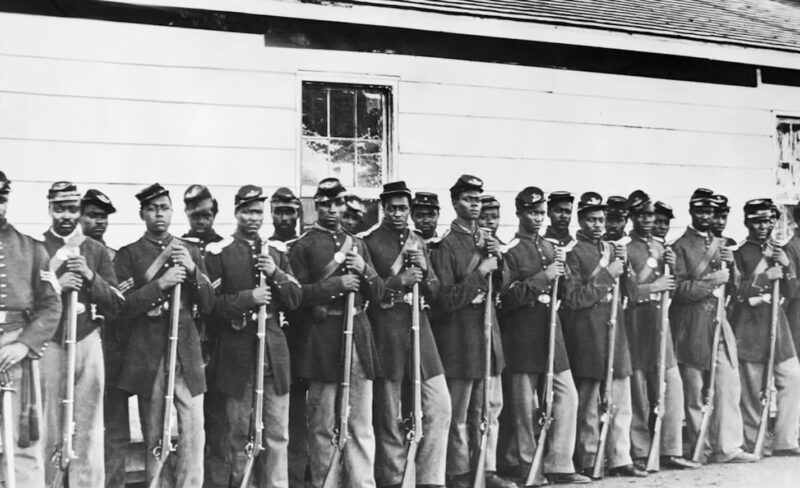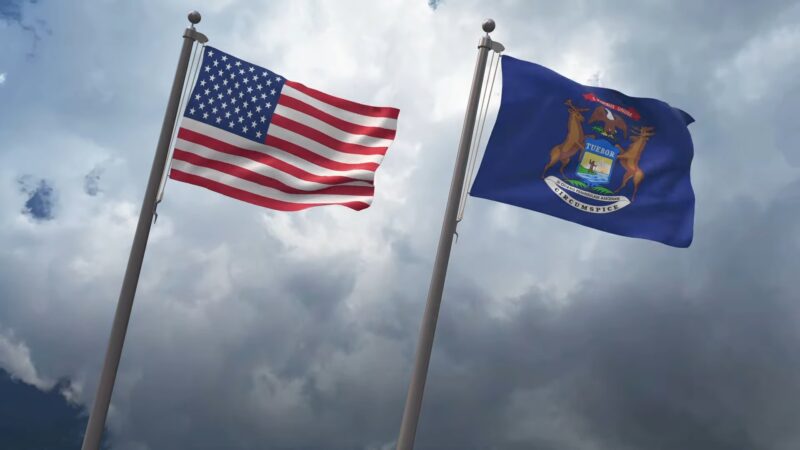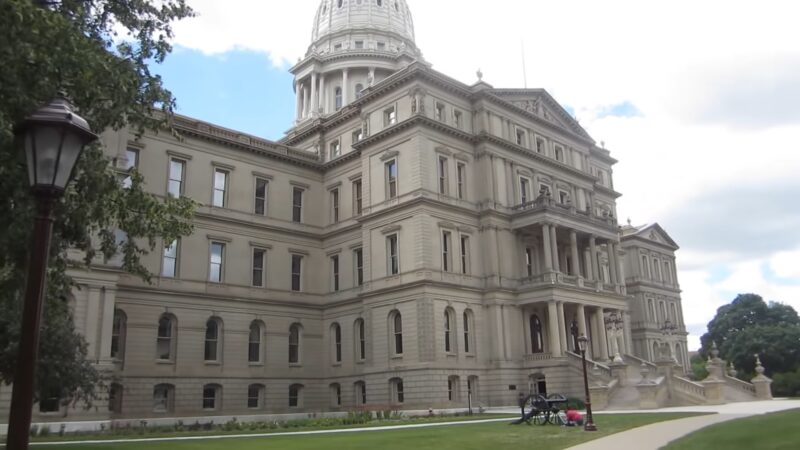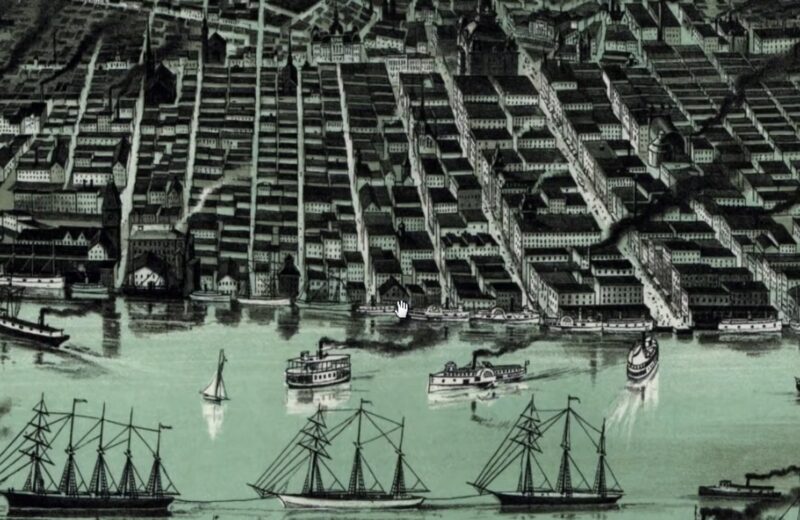The Toledo Strip Dispute
The Toledo Strip, a seemingly inconspicuous piece of land, became the focal point of a heated boundary dispute between Michigan and Ohio in the early 19th century. This strip, located near present-day Toledo, Ohio, was more than just a piece of land; it was a symbol of state pride, economic potential, and strategic importance.
The Origins of the Dispute
The origins of the dispute can be traced back to the Northwest Ordinance of 1787 and the subsequent surveys that aimed to delineate state boundaries. Due to inaccuracies in these surveys, both Michigan and Ohio believed they had legitimate claims to the Toledo Strip.
This strip was not just any piece of land; it was strategically located at the mouth of the Maumee River, which promised significant economic and transportation advantages.
The Toledo War
As tensions escalated, both territories began to mobilize militias, leading to what is now known as the Toledo War. While this “war” did not result in any fatalities, it was marked by arrests, confrontations, and a lot of saber-rattling. The situation became so intense that it required federal intervention to prevent an all-out conflict.
The Compromise
In a bid to resolve the dispute, Congress stepped in. They decided to award the Toledo Strip to Ohio, a decision that was initially met with outrage in Michigan. However, as part of the compromise, Michigan was offered the vast expanse of the western Upper Peninsula.
On the surface, this might have seemed like a raw deal for Michigan. But in hindsight, it was a blessing in disguise. The Upper Peninsula was rich in timber, minerals, and other natural resources, which later played a pivotal role in Michigan’s economic boom.
The Slavery Challenging

The path to statehood for Michigan was further complicated by the overarching national issue of slavery. The early 19th century was a period of intense division in the United States, with states being categorized as either “free” or “slave.”
The National Context
Ohio, a slave state, and Michigan, a free territory, represented this national divide. Congress was apprehensive about Michigan’s admission as a state.
The concern was that it would tip the balance of power in the Senate, giving free states an advantage over slave states.
Michigan’s Bold Response
In response to these concerns, Michigan took a bold and principled stand. The territory drafted a constitution that unambiguously prohibited slavery.
This move not only underscored Michigan’s commitment to the abolitionist cause but also alleviated some of Congress’s apprehensions. By taking this step, Michigan showcased its moral compass and set a precedent for other territories and states to follow.
The Path to Statehood

The journey to statehood for any territory in the early United States was not merely a matter of political will or territorial acquisition. There were specific criteria that needed to be met, and one of the most significant was the population requirement.
The Northwest Ordinance of 1787
The Northwest Ordinance, enacted in 1787, was a seminal piece of legislation that outlined the process by which new states could be admitted to the Union. Among its many provisions, it stipulated that a territory needed to have a minimum population of 60,000 inhabitants to qualify for statehood.
This requirement was not arbitrary. It was designed to ensure that new states had a sufficiently large population to support a stable and functional government.
Michigan Meets the Mark
By 1835, after years of growth and development, Michigan reached this population milestone. This was a moment of immense pride for the territory.
Meeting this criterion was not just about numbers; it signified that Michigan had grown and matured, both demographically and socio-economically, to a point where it could sustain itself as a state.
From Territory to State

On January 26, 1837, after overcoming numerous challenges, Michigan was formally admitted to the Union. This was a monumental achievement, marking the culmination of years of effort, negotiation, and perseverance.
Capital Transitions
Detroit, a bustling hub of commerce and activity, initially served as the state’s capital. However, in a move to centralize the state’s administrative functions, the capital was shifted to Lansing in 1847.
This relocation was strategic, aiming to make the capital more accessible to residents from all parts of the state.
Beyond Territorial Gains
Michigan’s statehood was not just a matter of adding another star to the American flag. The state’s admission had broader implications for the Union.
It reinforced the idea of a united, expanding nation, moving forward together despite regional differences and disputes. Moreover, Michigan’s rich endowment of natural resources, particularly lumber, and iron, positioned it as a key player in the nation’s burgeoning Industrial Revolution.
The state’s forests provided the timber that built cities, and its mines supplied the iron that laid down thousands of miles of railroad tracks. Michigan wasn’t just a beneficiary of the Industrial Revolution; it was one of its primary engines.
Modern Michigan

Today, Michigan is synonymous with both industrial prowess and breathtaking natural landscapes. Its transformation from a frontier territory to a modern state is nothing short of remarkable.
The Automotive Capital
Michigan’s industrial landscape is dominated by the automotive industry. Cities like Detroit, often referred to as the “Motor City,” are a testament to this legacy.
Major automakers, such as General Motors and Ford, have their roots firmly planted in Michigan soil. These companies have not only provided employment to millions over the decades but have also shaped the global automotive industry with their innovations and designs.
A Nature Lover’s Paradise
Beyond its steel and concrete, Michigan boasts some of the most stunning natural beauty in the United States. With its location bordering four of the Great Lakes, it offers over 3,000 miles of freshwater coastline.
The state’s untouched lakes, lush woods, and charming shorelines attract a large number of tourists looking to fully immerse themselves in its natural wonders. Whether visitors prefer embarking on a thrilling kayaking adventure in Lake Superior, exploring the untamed wilderness of the Porcupine Mountains within the Michigan Wild Frontier, or just savoring the breathtaking view of a sunset gracing Lake Michigan, there are countless opportunities for nature enthusiasts to indulge in the state’s diverse offerings.
A Journey Through Time
To truly understand Michigan’s present, one must explore its past. The state’s history is a tapestry of events, decisions, and milestones that have shaped its identity.
- French Footprints: In 1668, the French established the first permanent European settlement in Michigan. This marked the beginning of European influence in the region, which would later see British and American control.
- Northwest Territory Era: Between 1787 and 1805, Michigan was part of the vast Northwest Territory. This period saw the laying down of governance structures and the initial phases of settlement.
- Birth of the Michigan Territory: In 1805, the Michigan Territory was carved out, setting the stage for its eventual statehood.
- The Toledo War: The years 1835-1836 witnessed the Toledo War, a boundary dispute with Ohio. Though bloodless, it was a significant event in Michigan’s path to statehood.
- The Frostbitten Convention: In December 1836, in the town of Ann Arbor, Michigan delegates convened for what became known as the Frostbitten Convention. Here, they agreed to the terms that would resolve the Toledo Strip dispute.
- Statehood Achieved: On January 26, 1837, Michigan was admitted to the Union as the 26th state, a moment of immense pride and significance.
- Capitals and Governance: Detroit, with its strategic location and growing importance, was Michigan’s first capital. However, to better serve the state’s expanding territory, Lansing was chosen as the new capital in 1847.
- Fueling the Industrial Revolution: Michigan’s abundant natural resources, especially timber, and iron, played a pivotal role in America’s Industrial Revolution. The state’s mines and forests provided the raw materials that powered industries and built cities.
FAQ
Why was Michigan’s statehood so important?
Michigan’s statehood was important for a number of reasons. First, it helped to solidify the Union and expand its borders. Second, Michigan played an important role in the development of the American economy. Third, Michigan’s statehood was a major victory for the free states in the fight against slavery.
What are some of the natural resources that helped Michigan to develop its economy?
Michigan is rich in natural resources, including lumber, iron, copper, and salt. These resources helped to fuel the Industrial Revolution and make Michigan a major manufacturing center.
What are some of the major industries in Michigan today?
Michigan’s economy is diverse, with a number of major industries. The automotive industry is the largest industry in Michigan, followed by the manufacturing, healthcare, and tourism industries.
What are some of the challenges that Michigan faces today?
Michigan faces a number of challenges, including economic decline, population loss, and environmental problems. The state is also working to address the issue of racial inequality.
Final Words
In conclusion, Michigan’s path to statehood was neither straightforward nor easy. However, its resilience and determination have shaped it into the influential and vibrant state it is today.
Whether you’re drawn to its historical significance or its natural beauty, Michigan’s story is a testament to the American spirit.
